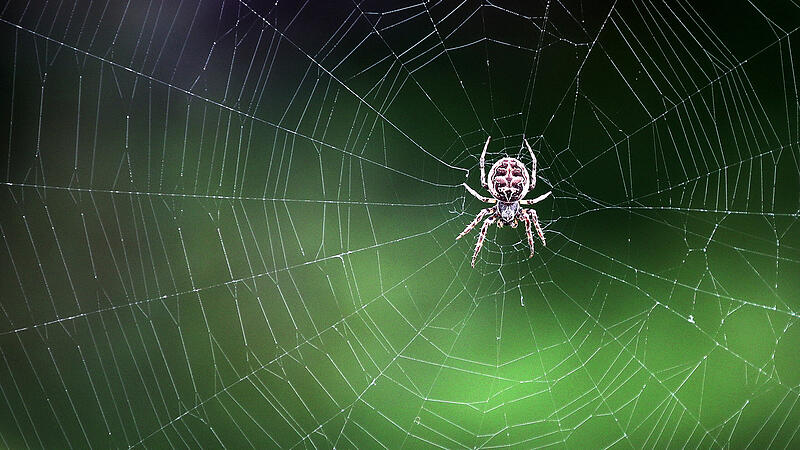Image: VOLKER Weihbold

Fear, panic, terror: Spiders trigger many things in humans – above all, they fascinate the scientists at the Johannes Kepler University. Researchers from the Institute for Medical and Biomechatronics and the Institute for Applied Physics investigated why the eight-legged animals do not stick to their own webs and led them to a breakthrough in nanofiber research in an international EU project.
“Nanofibers are being used more and more around the world, for example in electronic components, osmosis systems for seawater desalination, in fuel cells or in high-performance filters,” explains Sebastian Lifka from the Institute for Medical and Biomechatronics. “They are light and durable, but have the disadvantage that they stick to surfaces very strongly because of the so-called van der Waals forces.”
Dealing with this is difficult: the fibers used industrially are between 10 and 800 nanometers thick. For comparison: a human hair has a diameter of approx. 70,000 nanometers.
So the researchers borrowed from those who have been gathering experience in this cause for 300 million years: spiders. Because, despite what it may seem, spiders themselves are not immune to the sticky effects of their webs.

Animal Experts
They too had to develop methods to avoid getting tangled up in their own webs. In the course of evolution, weavers – which incidentally are not insects but arachnids and are therefore related to scorpions and mites – have become experts in nanofiber technology. Some species have developed the calamistrum: a structure on the hind legs that looks like a comb and its surface finish ensures that the spider does not get caught on its own threads when weaving the web.
“We were inspired by the calamistrum of the featherfoot spider,” says Lifka. “However, filaments have different diameters and properties than industrial fibers. But we have succeeded in implementing the principle and also scaling it for technically used fibers.”
The approach has already proven itself in a pilot test in an electrospinning system. Previously, costly intermediate steps had to be incorporated in order to be able to detach the finished fibers from the machine. With the new method, these steps can be saved – an improvement that could also be used in medicine.
In various tests, the researchers showed that the adhesion of the nanofibers was between 60 and 95 percent lower with the new method.
Source: Nachrichten




